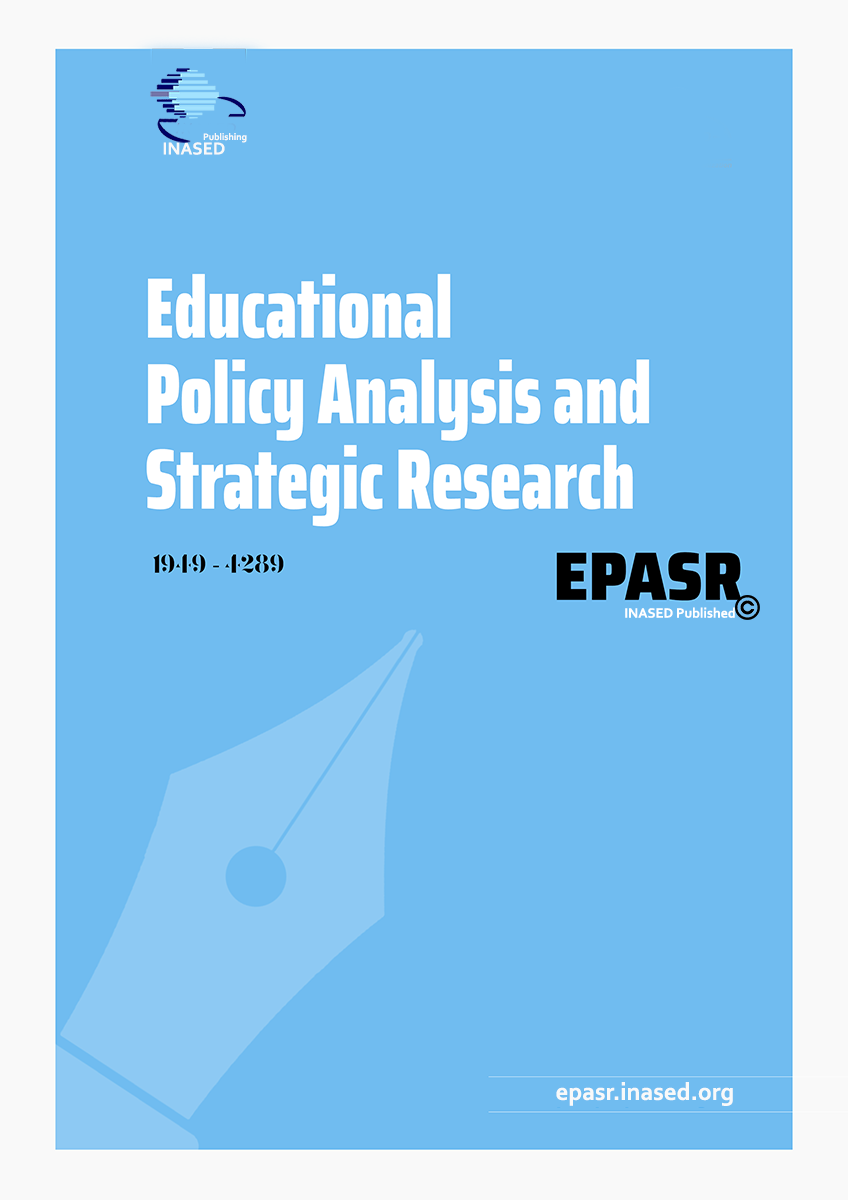- Al, U. & Madran O. (2004). Web tabanlı uzaktan eğitim sistemleri: sahip olması gereken özellikler ve standartlar. Bilgi Dünyası Dergisi, 5 (2), 259 – 271. https://bd.org.tr/index.php/bd/article/view/491/487 (24.03.2021). [Google Scholar]
- Beaton, D. E., Bombardier, C., Guillemin, F., & Ferraz, M. B. (2000). Guidelines for the process of cross – cultural adaptation of self – report measures. Spine, 25 (24), 3186 – 3191. https://doi.org/10.1097/00007632-200012150-00014 (12.03.2021). [Google Scholar] [Crossref]
- Blackman, G., Pedersen, J., March, M., Reyes – Fournier, E., & Cumella, E. J. (2019). A comprehensive literature review of online teaching effectiveness: Reconstructing the conceptual framework [Unpublished manuscript]. [Google Scholar]
- Brown, T., A. (2006). Confirmatory Factor Analysis for Applied Research. New York: The Guilford Press. [Google Scholar]
- Büyüköztürk, Ş. (2012). Sosyal Bilimler için Veri Analiz El Kitabı. Ankara: Pegem Akedemi Yayıncılık. [Google Scholar]
- Byrne, B. M. (2010). Structural Equation Modeling with Amos: Basic Concepts, Applications, and Programming (2nd Edition). New York: Routledge. [Google Scholar]
- Cabı, E. (2018). Teaching computer literacy via distance education: Experiences of the instructors. Başkent University Journal of Education, 5 (1), 61 – 68. http://webcache.googleusercontent.com/search?q=cache:HcBb9w4ZqUMJ:buje.baskent.edu.tr/index.php/buje/article/download/93/90/+&cd=3&hl=tr&ct=clnk&gl=tr (23.03.2021). [Google Scholar]
- Chickering, A. W., & Gamson, Z. F. (1987). Seven principles for good practice in undergraduate education. AAHE Bulletin, 3, 7. https://files.eric.ed.gov/fulltext/ED282491.pdf (20.03.2021). [Google Scholar]
- Dinçer, S. (2006). Bilgisayar destekli eğitim ve uzaktan eğitime genel bir bakış. Akademik Bilişim Konferansı 2006, Denizli. https://www.researchgate.net/publication/298192658_Bilgisayar_destekli_egitim_ve_uzaktan_egitime_genel_bir_bakis (20.03.2021). [Google Scholar]
- Erkuş, A. (2012). Psikolojide Ölçme ve Ölçek Geliştirme. Ankara: Pegem Akademi Yayınları. [Google Scholar]
- Eygü, H., & Karaman, S. (2013). A study on the satisfaction perceptions of the distance education students. Kırıkkale University Journal of Social Sciences, 3 (1), 36 – 59. https://dergipark.org.tr/tr/download/article-file/181058 (19.03.2021). [Google Scholar]
- Hu, L.-t., & Bentler, P. M. (1999). Cutoff criteria for fit indexes in covariance structure analysis: Conventional criteria versus new alternatives. Structural Equation Modeling, 6 (1), 1 – 55. https://doi.org/10.1080/10705519909540118 [Google Scholar] [Crossref]
- Jones, D. (1996). Computing by distance education: Problems and solutions. ACM SIGCSE Bulletin, 28 (SI), 139 – 146. https://doi.org/10.1145/237477.237616 (03.03.2021). [Google Scholar] [Crossref]
- Karakoç, F.Y., ve Dönmez, L. (2014). Ölçek gelı̇ştı̇rme çalışmalarında temel ilkeler. Tıp Eğitimi Dünyası, 13 (40), 39 – 49. https://dergipark.org.tr/tr/download/article-file/199275 (22.05.2021). [Google Scholar]
- Kline, T., J., B. (2005). Psychological testing: A practical approach to design and evaluation. London: Sage Publications. [Google Scholar]
- Kenny, D., A. (2020). Measuring Model Fit. http://davidakenny.net/cm/fit.htm (22.03.2021). [Google Scholar]
- Meydan, C.H. ve Şeşen H. (2015). Yapısal Eşitlik Modellemesi AMOS Uygulamaları. Ankara: Detay Yayıncılık. [Google Scholar]
- O’neill, K., Singh, G., & O’donoghue, J. (2004). Implementing eLearning programmes for higher education: A review of the literature. Journal of Information Technology Education: Research, 3 (1), 313 – 323. https://www.learntechlib.org/p/111456/ (18.03.2021) [Google Scholar]
- Ottenbreit – Leftwich, A. T., Glazewski, K. D., Newby, T. J., & Ertmer, P. A. (2010). Teacher value beliefs associated with using technology: Addressing professional and student needs. Computers & Education, 55 (3), 1321 – 1335. https://www.sciencedirect.com/science/article/abs/pii/S0360131510001612 (12.03.2021). [Google Scholar]
- Reyes – Fournier, E., Cumella, E. J., Blackman, G., March, M., & Pedersen, J. (2020). Development and validation of the online teaching effectiveness scale. Online Learning, 24 (2), 111 – 127. https://files.eric.ed.gov/fulltext/EJ1260360.pdf (01.02.2021). [Google Scholar]
- Rovai, A. P., & Barnum, K. T. (2003). On – line course effectiveness: An analysis of student interactions and perceptions of learning. International Journal of E-Learning & Distance Education / Revue internationale du e-learning et la formation à distance, 18 (1), 57 – 73. http://www.ijede.ca/index.php/jde/article/view/121/102 (04.04.2021). [Google Scholar]
- Saleh, A., & Bista, K. (2017). Examining factors impacting online survey response rates in educational research: Perceptions of graduate students. Journal of Multidisciplinary Evaluation, 13 (29), 63 – 74. https://files.eric.ed.gov/fulltext/ED596616.pdf (12.03.2021). [Google Scholar]
- Savaşır, I. (1994). Ölçek uyarlamasındaki bazı sorunlar ve çözüm yolları. Türk Psikoloji Dergisi, 33 (9), 27 – 32. https://www.psikolog.org.tr/tr/yayinlar/dergiler/1031828/tpd1300443319940000m000295.pdf (11.03.2021). [Google Scholar]
- Seçer, İ. (2015). Psikolojik Test Geliştirme ve Uyarlama Süreci: SPSS ve LISREL Uygulamaları. Ankara: Anı Yayıncılık. [Google Scholar]
- Seufert, S., Guggemos, J. & Sailer, M. (2021). Technology – related knowledge, skills, and attitudes of pre – and in – service teachers: The current situation and emerging trends. Computers in Human Behavior, 115 (2021), 1 – 7. https://doi.org/10.1016/j.chb.2020.106552 (11.03.2021). [Google Scholar] [Crossref]
- Shifflet, R., & Weilbacher, G. (2015). Teacher beliefs and their influence on technology use: A case study. Contemporary Issues in Technology and Teacher Education, 15 (3), 368 – 394. https://www.learntechlib.org/p/147400/ (11.03.2021). [Google Scholar]
- Tabachnick, B. G., & Fidell, L. S. (1996). Using Multivariate Statistics (3rd Edition). New York: Harper Collins College Publishers. [Google Scholar]
- Thomas, J. E. & Graham, C. R. (2017). Common practices for evaluating post – secondary online instructors. Online Journal of Distance Learning Administration, 20 (4). https://www.learntechlib.org/p/188473/ (15.03.2021). [Google Scholar]
- Tuncer, M., & Taspinar, M. (2008). The future of education and training in virtual environments and possible problems. Afyon Kocatepe University Journal of Social Science, 10 (1), 125 – 144. https://sbd.aku.edu.tr/Say%C4%B1lar/Cilt%20X%20Say%C4%B1%201%20Haziran%202008/B.6%20%20makale%20M.%20Tuncer,%20M.Ta%C5%9Fp%C4%B1nar.pdf (03.03.2021). [Google Scholar]
- Türel, Y. K., & Johnson, T. E. (2012). Teachers’ belief and use of interactive whiteboards for teaching and learning. Journal of Educational Technology & Society, 15 (1), 381 – 394. https://www.jstor.org/stable/pdf/jeductechsoci.15.1.381.pdf (20.03.2021). [Google Scholar]
- Vangrieken, K., Meredith, C., Packer, T., & Kyndt, E. (2017). Teacher communities as a context for professional development: A systematic review. Teaching and Teacher Education, 61, 47 – 59. https://www.sciencedirect.com/science/article/abs/pii/S0742051X16304681 (16.03.2021). [Google Scholar]
- Wexler, D. H. (2003). Shifting pedagogies: Intersections of computer-supported technologies, education, and power (Ph.D. Thesis). The Graduate School, Syracuse University. https://www.learntechlib.org/p/127957/ (17.03.2021). [Google Scholar]
- Wieland, A., Durach, C. F., Kembro, J., & Treiblmaier, H. (2017). Statistical and judgmental criteria for scale purification. Supply Chain Management: An International Journal, 22 (4), 321 – 328. https://doi.org/10.1108/SCM-07-2016-0230 (12.03.2021). [Google Scholar] [Crossref]
|


